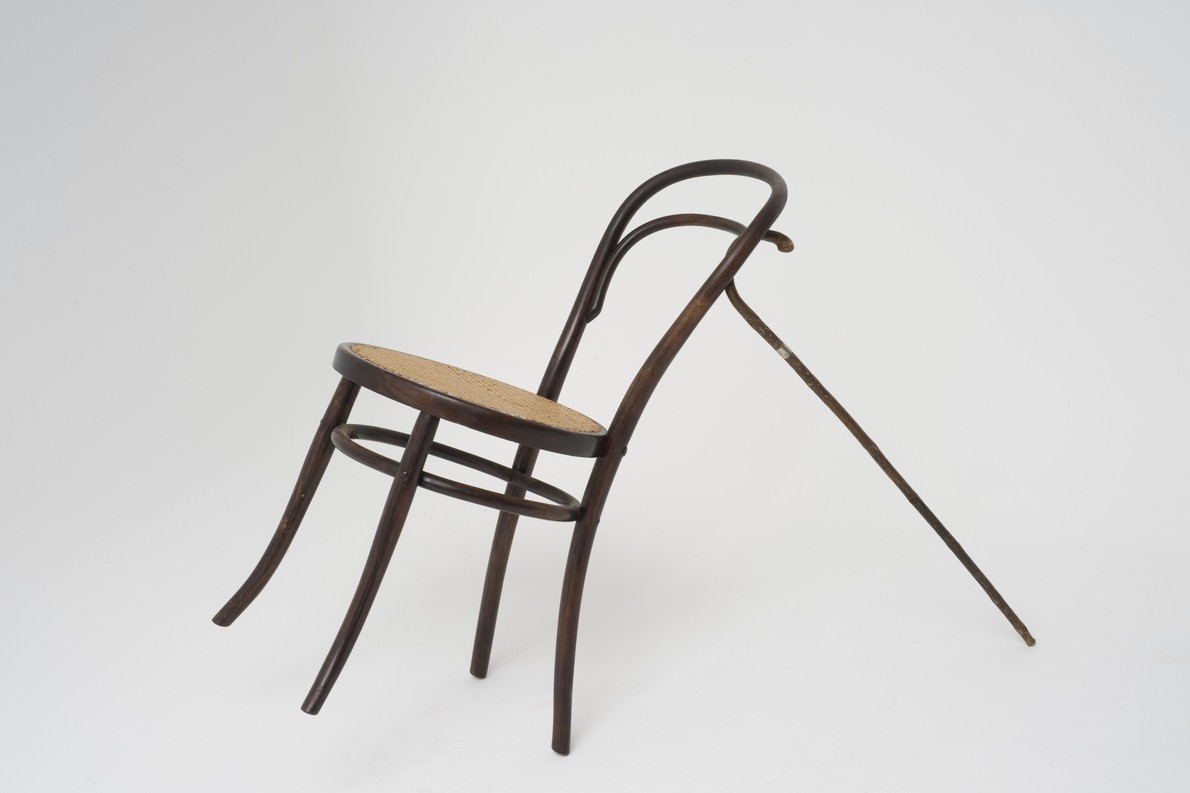Precarious Balance
A group exhibition of work by New Zealand and international contemporary artists. CoCA is a space for new art and new experiences.
This is the first exhibition at the Centre of Contemporary Art Toi Moroki since the 2011 earthquakes. Be moved, be challenged, be inspired. The audience is invited to respond to the idea of artist as innovator and to reconsider the conventional definition of sculpture.
Precarious Balance is a group exhibition featuring Sophie Bannan, Matt Calderwood, Sione Faletau, Claire Fontaine, Regan Gentry, Shaun Gladwell, Rob Hood, John Ward Knox, Joanna Langford, Richard Maloy, Zina Swanson, Catherine Yass, Peter Trevelyan, Abigail Reynolds, Erwin Wurm, Wayne Youle.
The exhibition includes precariously balanced objects and architectural references, giving a sense of playfulness. Silliness, laughter, satire and fun provide a counterbalance to the physical tension in the artworks. The works may also cause us to reflect on the social and physical rebuilding of Christchurch, and the broader global issues of social and political inequality.
The exhibition also incorporates some of the stonework from the original 1880’s Canterbury Society of Arts building, saved in the earthquake recovery programme. They are placed throughout the gallery, marking the history and significance of the CSA, a reference to the foundations of the organisation and the re-launch of CoCA. The integration of these stones within the exhibition is a symbol of the pivotal role that the organisation will play in the Christchurch community.
The Artists
-
Abigail Reynolds

Abigail Reynolds
United KingdomAbigail Reynolds (b. 1970) was born in London. Before pursuing fine arts she studied Literature at Oxford University. She graduated with a Masters of Fine Arts from Goldsmiths in 2002, but had been exhibiting group and solo exhibitions throughout Europe and the USA since 2000.
Web site -
Catherine Yass
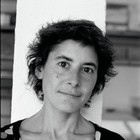
Catherine Yass
United KingdomCatherine Yass (b. 1963) lives and works in London. Yass is a leading contemporary photographer and filmmaker whose work explores the psychological impact of architectural space. Yass’ career has been an illustrious one. She has staged a number of solo exhibitions, and in 2002 was nominated for the prestigious Turner prize.
Web site -
Claire Fontaine
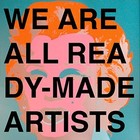
Claire Fontaine
FranceClaire Fontaine is a Paris-based collective, founded in 2004. Claire Fontaine lifted their name from a popular brand of school notebooks, and soon after declared herself a ‘readymade artist’. Claire Fontaine elaborates a version of neo-conceptual art that often looks like the work of other artists.
Web site -
Erwin Wurm

Erwin Wurm
AustriaErwin Wurm (b. 1954) is an Austrian artist, who lives and works in Vienna and Limberg. Wurm is best known for his humorous approach to formalism, and critique of consumer society and contemporary culture. He makes use of everyday items to make the familiar strange, humorous and unsettling. His notorious series, One Minute Sculptures, has – since the 1980s – invited audiences to become a sculpture for one minute, by following written and sometimes illustrated instructions.
Web site -
Joanna Langford
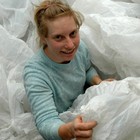
Joanna Langford
New ZealandJoanna Langford (b. 1978) is a New Zealand artist, known for her imaginative installations made from found objects and second hand materials. Langford reuses the simplest of materials to transform the mundane into the magical. She was awarded the Olivia Spencer-Bower Fellowship in 2006, and a residency at Wanganui’s Sarjeant Gallery in 2007. Langford’s work has attracted considerable critical acclaim both nationally and internationally.
Web site -
John Ward Knox

John Ward Knox
New ZealandJohn Ward Knox (b. 1984) was born in Auckland, New Zealand. His minimalist sculptures and delicately rendered drawings are the kinds that prompt you to look twice, and ask yourself, how does Ward Knox uncannily balance that set of every day yet emotionally laden objects? In 2008 Knox was awarded the National Drawing Award and in 2015 was the Frances Hodgkins Fellow. His works are part of the James Wallace Art Trust and Chartwell Collections and feature in private collections.
Web site -
Matt Calderwood

Matt Calderwood
United KingdomMatt Calderwood (b. 1975) is a Belfast-born artist who lives and works in London. Calderwood is known for performance, sculpture and film works that are often filled with danger. He is best known for his installation that balance and counter-balance is an intriguing feature in much of Calderwood’s work. His works often feature commonplace objects such as buckets, basketballs and wine glasses in alignments that appear on the verge of collapse.
Web site -
Peter Trevelyan
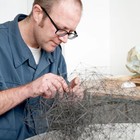
Peter Trevelyan
New ZealandPeter Trevelyan (b. 1973) graduated from the University of Canterbury’s School of Fine Arts in 2000. In 2008 he received a Master of Fine Arts, and a PhD in 2014 from Massey University’s School of Fine Arts.
A broad range of influences informs Trevelyan’s work. His interests in mathematics, drawing and architecture are evident in his sculptural works, but less obvious is his fascination with theories of social systems. Since beginning exhibiting in 2000, Trevelyan has built up an impressive exhibition history, including several major temporary public artworks.
Web site -
Regan Gentry
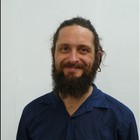
Regan Gentry
New ZealandRegan Gentry (b. 1976) graduated from Otago Polytechnic in 2000 with a Bachelor of Fine Arts. Gentry is known for artworks that seamlessly integrate into public space.
His public works of note include Near Nowhere, Near Impossible (2008), which was the result of Gentry’s residency at the Sarjeant Gallery in Whanganui, Flour Power (2008) in Christchurch and Subject to Change (2009) in Wellington. Gentry’s art reflects his sense of humour and love of the absurd.
Web site -
Richard Maloy
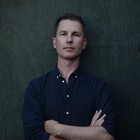
Richard Maloy
New ZealandRichard Maloy (b. 1977) completed a Masters of Fine Arts at Elam School of Fine Arts, University of Auckland in 2001, and in 2010 completed a Fullbright Scholarship in California. Maloy’s practice is multi-disciplinary. Maloy is concerned with the act of art making and the connections between artists, their artwork and their audience. Because of this, process and performance are central to Maloy’s work. Maloy explores his interests through a range of artistic mediums including sculpture, installation, photography and video.
Web site -
Rob Hood
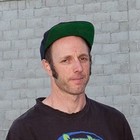
Rob Hood
New ZealandRob Hood (b.1974) is a Christchurch-based artist. He holds an MFA (2011) and BFA Sculpture (1999) from Ilam School of Fine Arts, Canterbury University. Rob utilises a range of media from photography and drawing to installation and video. He is known for his penchant for taking up and transforming the found detritus of pop and consumer culture. Hood was the Olivia Spencer Bower Fellow in 2007 and is represented by Jonathan Smart Gallery.
Web site -
Shaun Gladwell
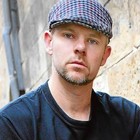
Shaun Gladwell
AustraliaShaun Gladwell (b. 1972) is an Australian-born, London-based artist who has worked with painting, installation and sculpture, but is best known for his video works. Gladwell’s films explore energy, balance and motion, through tracking cycles, rhythms and various kinds of informal performance, from bike-riding and car-surfing through to skateboarding. Gladwell completed Associate Research at Goldsmiths College, London in 2001, represented Australia at the 53rd Venice Biennale and travelled to Afghanistan as the official Australian War Artist in 2009.
Web site -
Sione Faletau

Sione Faletau
New ZealandSione Faletau (b. 1991) is a Tongan born, South Auckland-based performance and video artist whose work deals with Tongan ideals of body and masculinity. The weight of culture, legacy, gender and identity are recurring themes in his works. Faletau carries this weight both literally and conceptually; in many of his works Faletau carries laden objects or other people, using his body to explore ideas of the Tongan male body as a tool.
Web site -
Sophie Bannan
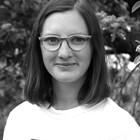
Sophie Bannan
New ZealandSophie Bannan is a Christchurch based artist and writer with an MFA from the University of Canterbury. Recent exhibitions include; 'Backwater,' North Projects, Christchurch; 'Variations,' Knight Street Art Space, Melbourne; 'The Optimists,' with John Ward-Knox, Blue Oyster Art Project Space, Dunedin; and 'Thinking About Building,' (curated by Melanie Oliver), The Physics Room, Christchurch.
-
Zina Swanson
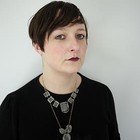
Zina Swanson
New ZealandZina Swanson (born 1981) is based in Christchurch and investigates the relationship between nature and culture. Her works are both disquieting and enchanting. Swanson teases out abstract ideas in drawings and sculpture. In her recent work she explores rituals, superstitions, and the relationship between people and plants. There is a measured yet organic approach to her works - an unsettling balance between the natural and man-made.
She was the Frances Hodgkins Fellow in 2013 and in 2014 visited New York as an apexart inbound fellow.

Abigail Reynolds
United Kingdom
Abigail Reynolds (b. 1970) was born in London. Before pursuing fine arts she studied Literature at Oxford University. She graduated with a Masters of Fine Arts from Goldsmiths in 2002, but had been exhibiting group and solo exhibitions throughout Europe and the USA since 2000.
View artwork
Catherine Yass
United Kingdom
Catherine Yass (b. 1963) lives and works in London. Yass is a leading contemporary photographer and filmmaker whose work explores the psychological impact of architectural space. Yass’ career has been an illustrious one. She has staged a number of solo exhibitions, and in 2002 was nominated for the prestigious Turner prize.
View artwork
Claire Fontaine
France
Claire Fontaine is a Paris-based collective, founded in 2004. Claire Fontaine lifted their name from a popular brand of school notebooks, and soon after declared herself a ‘readymade artist’. Claire Fontaine elaborates a version of neo-conceptual art that often looks like the work of other artists.
View artwork
Erwin Wurm
Austria
Erwin Wurm (b. 1954) is an Austrian artist, who lives and works in Vienna and Limberg. Wurm is best known for his humorous approach to formalism, and critique of consumer society and contemporary culture. He makes use of everyday items to make the familiar strange, humorous and unsettling. His notorious series, One Minute Sculptures, has – since the 1980s – invited audiences to become a sculpture for one minute, by following written and sometimes illustrated instructions.
View artwork
Joanna Langford
New Zealand
Joanna Langford (b. 1978) is a New Zealand artist, known for her imaginative installations made from found objects and second hand materials. Langford reuses the simplest of materials to transform the mundane into the magical. She was awarded the Olivia Spencer-Bower Fellowship in 2006, and a residency at Wanganui’s Sarjeant Gallery in 2007. Langford’s work has attracted considerable critical acclaim both nationally and internationally.
View artwork
John Ward Knox
New Zealand
John Ward Knox (b. 1984) was born in Auckland, New Zealand. His minimalist sculptures and delicately rendered drawings are the kinds that prompt you to look twice, and ask yourself, how does Ward Knox uncannily balance that set of every day yet emotionally laden objects? In 2008 Knox was awarded the National Drawing Award and in 2015 was the Frances Hodgkins Fellow. His works are part of the James Wallace Art Trust and Chartwell Collections and feature in private collections.
View artwork
Matt Calderwood
United Kingdom
Matt Calderwood (b. 1975) is a Belfast-born artist who lives and works in London. Calderwood is known for performance, sculpture and film works that are often filled with danger. He is best known for his installation that balance and counter-balance is an intriguing feature in much of Calderwood’s work. His works often feature commonplace objects such as buckets, basketballs and wine glasses in alignments that appear on the verge of collapse.
View artwork
Peter Trevelyan
New Zealand
Peter Trevelyan (b. 1973) graduated from the University of Canterbury’s School of Fine Arts in 2000. In 2008 he received a Master of Fine Arts, and a PhD in 2014 from Massey University’s School of Fine Arts.
A broad range of influences informs Trevelyan’s work. His interests in mathematics, drawing and architecture are evident in his sculptural works, but less obvious is his fascination with theories of social systems. Since beginning exhibiting in 2000, Trevelyan has built up an impressive exhibition history, including several major temporary public artworks.
View artwork
Regan Gentry
New Zealand
Regan Gentry (b. 1976) graduated from Otago Polytechnic in 2000 with a Bachelor of Fine Arts. Gentry is known for artworks that seamlessly integrate into public space.
His public works of note include Near Nowhere, Near Impossible (2008), which was the result of Gentry’s residency at the Sarjeant Gallery in Whanganui, Flour Power (2008) in Christchurch and Subject to Change (2009) in Wellington. Gentry’s art reflects his sense of humour and love of the absurd.
View artwork
Richard Maloy
New Zealand
Richard Maloy (b. 1977) completed a Masters of Fine Arts at Elam School of Fine Arts, University of Auckland in 2001, and in 2010 completed a Fullbright Scholarship in California. Maloy’s practice is multi-disciplinary. Maloy is concerned with the act of art making and the connections between artists, their artwork and their audience. Because of this, process and performance are central to Maloy’s work. Maloy explores his interests through a range of artistic mediums including sculpture, installation, photography and video.
View artwork
Rob Hood
New Zealand
Rob Hood (b.1974) is a Christchurch-based artist. He holds an MFA (2011) and BFA Sculpture (1999) from Ilam School of Fine Arts, Canterbury University. Rob utilises a range of media from photography and drawing to installation and video. He is known for his penchant for taking up and transforming the found detritus of pop and consumer culture. Hood was the Olivia Spencer Bower Fellow in 2007 and is represented by Jonathan Smart Gallery.
View artwork
Shaun Gladwell
Australia
Shaun Gladwell (b. 1972) is an Australian-born, London-based artist who has worked with painting, installation and sculpture, but is best known for his video works. Gladwell’s films explore energy, balance and motion, through tracking cycles, rhythms and various kinds of informal performance, from bike-riding and car-surfing through to skateboarding. Gladwell completed Associate Research at Goldsmiths College, London in 2001, represented Australia at the 53rd Venice Biennale and travelled to Afghanistan as the official Australian War Artist in 2009.
View artwork
Sione Faletau
New Zealand
Sione Faletau (b. 1991) is a Tongan born, South Auckland-based performance and video artist whose work deals with Tongan ideals of body and masculinity. The weight of culture, legacy, gender and identity are recurring themes in his works. Faletau carries this weight both literally and conceptually; in many of his works Faletau carries laden objects or other people, using his body to explore ideas of the Tongan male body as a tool.
View artwork
Sophie Bannan
New Zealand
Sophie Bannan is a Christchurch based artist and writer with an MFA from the University of Canterbury. Recent exhibitions include; 'Backwater,' North Projects, Christchurch; 'Variations,' Knight Street Art Space, Melbourne; 'The Optimists,' with John Ward-Knox, Blue Oyster Art Project Space, Dunedin; and 'Thinking About Building,' (curated by Melanie Oliver), The Physics Room, Christchurch.
View artwork
Zina Swanson
New Zealand
Zina Swanson (born 1981) is based in Christchurch and investigates the relationship between nature and culture. Her works are both disquieting and enchanting. Swanson teases out abstract ideas in drawings and sculpture. In her recent work she explores rituals, superstitions, and the relationship between people and plants. There is a measured yet organic approach to her works - an unsettling balance between the natural and man-made.
She was the Frances Hodgkins Fellow in 2013 and in 2014 visited New York as an apexart inbound fellow.
View artwork
Ha’amonga ‘a Maui, 2015, Sione Faletau
More about this artworkSione Faletau’s work is an endurance performance, made into a video work. The film shows Faletau and two of his brothers creating the shape of Tonga’s most famous monument. Naked, except for black tupenu, the brothers remain silent throughout the entire performance. Two of the brothers are kneeling, their hands on the ground, so as to resemble the pillars of the Ha’amonga ‘a Maui. A third brother lies across the other brothers’ bent backs on what looks like a thin mat, so that he resembles the trilithon lintel piece of the monument. The brothers’ stillness is contrasted with a fast, rasping drumbeat that is borrowed from a Tongan dance song. Although the brothers appear still, there is evident tension. The tension in holding up each other’s weight is communicated through the slight trembling seen in the two ‘pillar’ bodies; although the lintel-brother, with his eyes closed, seems comfortable and confident in the knowledge that his brothers will support him. The influence of his Tongan ancestors is connected through the male body form. This has spread throughout the Pacific through the creation of various monuments. At Mu’a, Faletau’s ancestors laid slabs of coral on top of one another to create pyramids over the graves of kings and queens; in colonies like Samoa and ‘Uvea they raised stone forts. The function and purpose of Ha’amonga ‘a Maui is more obscure. Its shape is unparalleled in Tonga, and indeed in the Pacific, and neither oral traditions nor contemporary scholars offer agreement on its meaning.

One Minute Sculpture, 2005/2014, Erwin Wurm
More about this artworkWurm will be showing two artworks from his series of One Minute Sculptures as part of Precarious Balance. Each of them playfully ties in with the overarching theme of balance and precariousness and invites the audience to become an active part of the artwork. Organisation of Love presents the viewer with a small assortment of plastic bottles filled with liquid, a low platform/plinth and an illustrated instruction. The audience is invited to pair up and attempt to hold the objects in place in the space between their bodies. The objects - all sourced locally - reference banal domesticity, chores, consumption and detritus. The changing distribution of the liquid in each objects adds to the challenge of maintaining a level, balanced equilibrium. The sculpture is all too easily disrupted by a breath drawn in too sharply or a giggle at the absurdity and imminent failure of it all. Astronomical Enterprise is comprised of a plinth, two tennis balls and an illustrated instruction for the viewer-cum-performer to balance the balls in a small stack, held in place on the plinth by their forehead. The challenge in this seemingly simple action makes it an ‘enterprise’ while the spherical tennis balls are transformed in such close proximity. This One Minute Sculpture invites the audience to enact a prone contemplation of perspective and balance that is both an exercise and object.
Precarious Balance is a two-part exhibition and will be followed by Precarious Nature at the end of this year. Throughout the season a programme of films and talks explore these themes of balance and stability.
Curated by Paula Orrell, Director and Principal Curator, CoCA, Toi Moroki
Curatorial Interns: Audrey Baldwin, Jason Huang and Bryany Joslen.
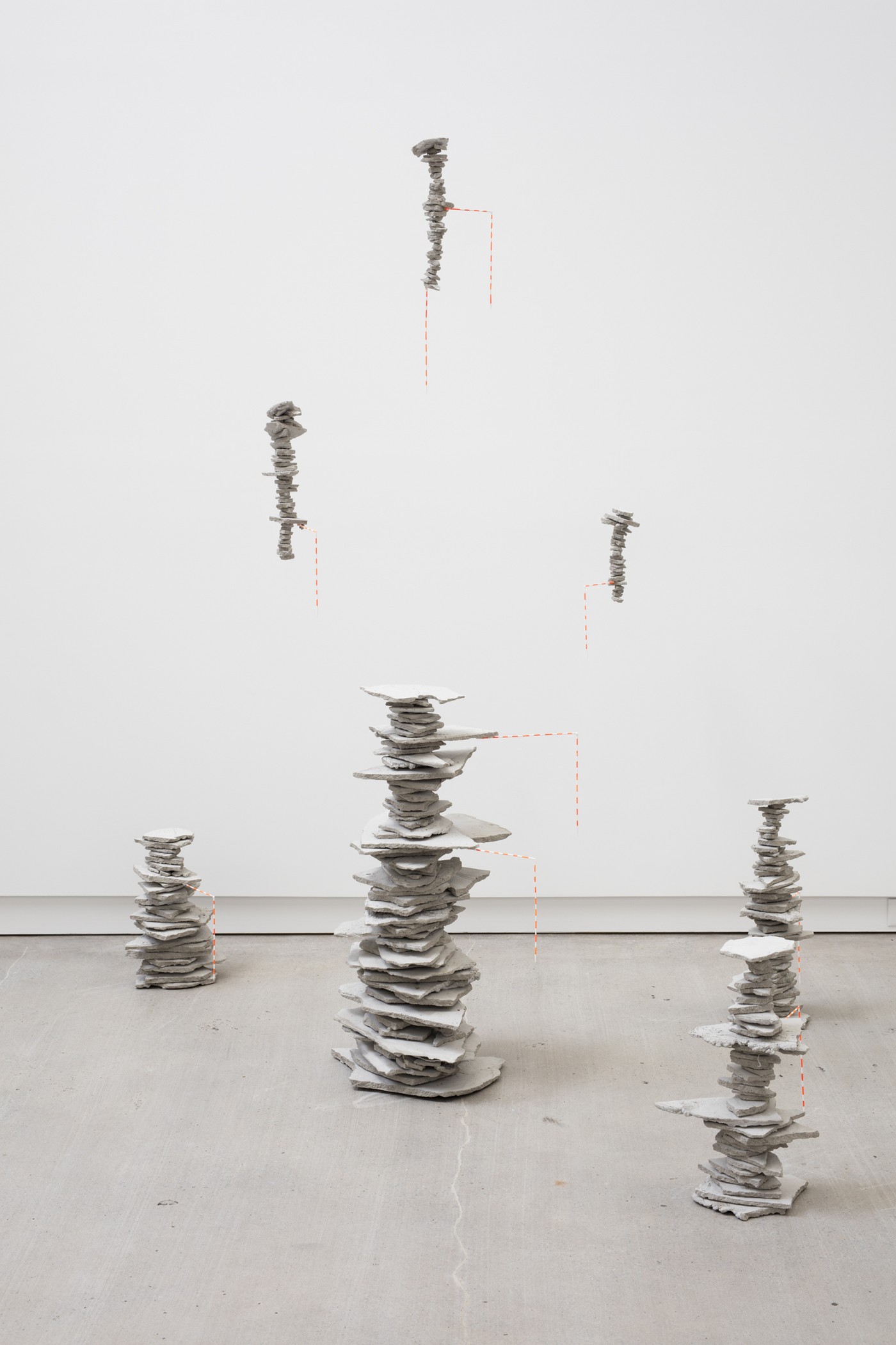
Calling the Deep, 2015, Joanna Langford
More about this artworkJoanna Langford’s fascination is with making installations and seeing how far she can push the materials she works with. Often limiting herself to two or three materials, Langford pulls them apart and puts them back together again. In doing so, she pushes boundaries and transforms everyday objects into something that is whimsical, surreal and enchanting. Langford’s experience of working in recycling shops has naturally inspired her interest in working with objects from her surroundings. She lets the materials she works with dictate the artwork’s form, making her practice similar to that of the Italian Arte Povera movement of the 1960s. Langford’s works are also inspired by landscapes and architecture. The objects she creates are tower-like structures that are wonky yet stable. The towers seem to teeter on an edge. And while Langford’s objects might seem awkward or clumsily placed together, they are the result of a perfect combination of technique and skill. In Calling the Deep Langford balances thin stacks of cast cement fragments to build up carefully planned and complex structures. Some of the objects stand on the floor, others are carefully suspended to float in space. Bamboo skewers painted in alternate bands of white and high viz orange extend out and hang from the cement structures. The skewers act as instruments for detecting imagined geological data, prodding at the mysteries of the layered cement strata.
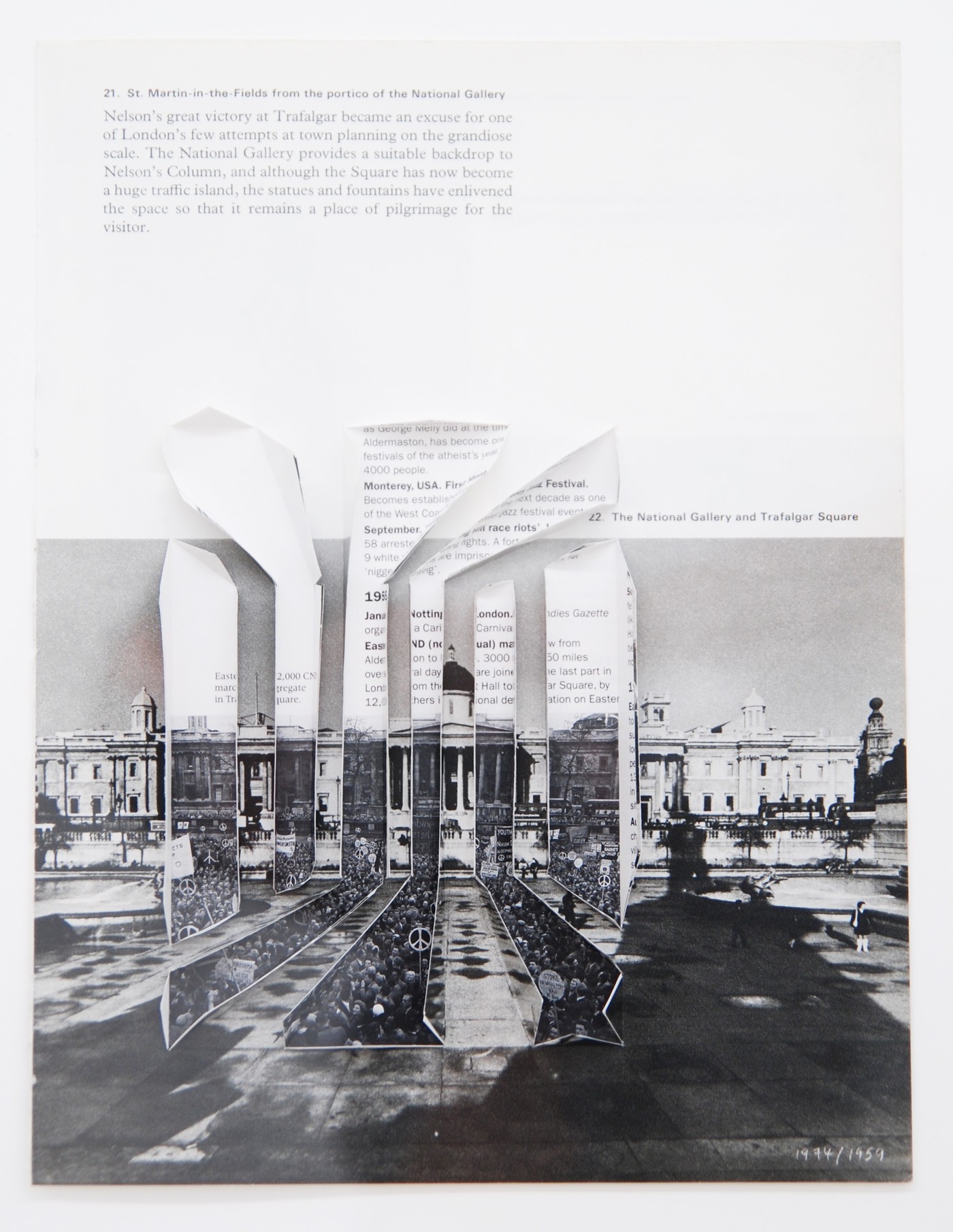
National Gallery 1974/2000, 2012
National Gallery 1974/2000, 2012, Abigail Reynolds
More about this artworkAbigail Reynolds scours flea markets and old bookstores to find material that she then repurposes for artworks. She collects old books and photographs from atlases, tourist guides and encyclopedias, many of which feature rural English landscapes, and turns the material into three-dimensional collages. In doing so, Reynolds questions the way in which our relationship to the visual world, and particularly the British landscape, is mediated and understood through a populist lens. Untitled M1 (Brimham Rocks) is a large-scale ink on silk screen work that makes use of a found image, likely taken by or for a tourist. The image is of the balancing rocks of Brimham. The rocks seem to hover above a young boy shown looking up at them. A tiny plinth holds the natural sculpture aloft, creating a palpable sense of tension. Looming blue blobs seem to build up and tumble down the right hand side of the work. Reynolds’ transformation of otherwise banal documentary photographs is one that results in a sublime vision. The often-photographed tourist destination that is depicted is made alien by the ink forms that subsume and transform it; it is barely recognisable as the formation that it truly is. In National Gallery 1974/2000 the artist juxtaposes a photograph of the British National Gallery in Trafalgar Square, London with an image from an iconic CND (Campaign for Nuclear Disarmament) protest on the same site but at a different time. The institution interspersed with a scene of an anti-establishment group - highlights the question of public space, the tension of different ideals against the backdrop imperialism of the building.
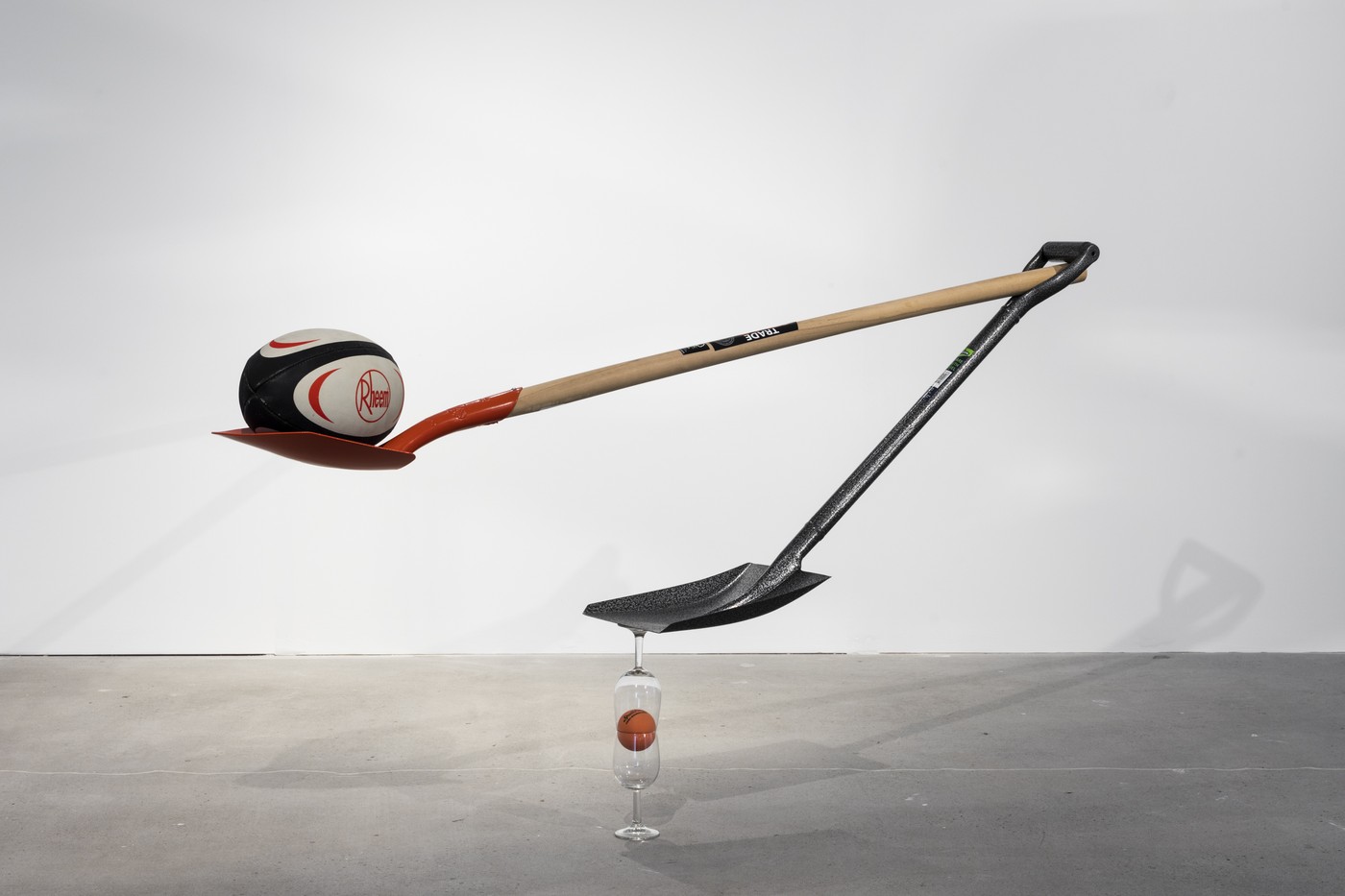
Untitled, 2016, Matt Calderwood
More about this artworkCalderwood’s installation or sculptural work reflects ideas of purposelessness and risk taking through a precarious balancing of objects. He has taken everyday, unassuming objects – buckets, balls and ladders – and placed them together to create a sculpture that relies upon balance in order for the objects to be kept in their correct form. While the work is light-hearted, it is undoubtedly brimming with tension. The individual objects are pushed to their extreme limits. The objects combine with each other to create a new functionality, and rely on each other to sustain the sculpture. Destruction, chance, order and equilibrium all play a part in the composition of this work. The resulting work is one that is playful and dangerous. All of the objects are carefully orchestrated to avoid a complete collapse, reflecting Calderwood’s ongoing interest in exploring the co-dependent relationships that exist between groups of objects that are combined to achieve a sculptural goal. Calderwood’s artistic practice is underpinned by unconventional methods, and the artist continually placing constraints upon himself and the creative process.
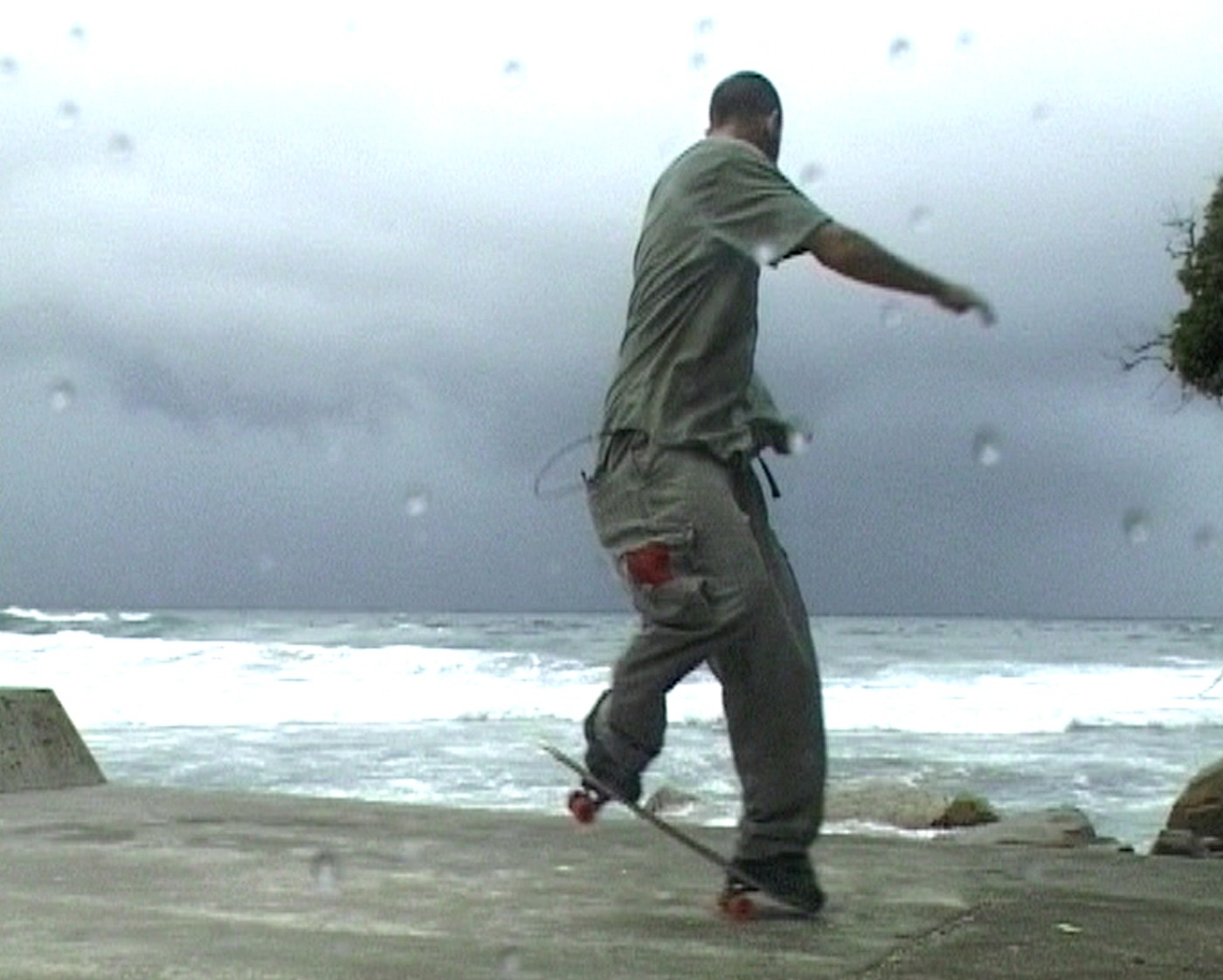
Storm Sequence, 2000, Shaun Gladwell
More about this artworkShaun Gladwell’s practice explores the personal experiences that individuals have with contemporary culture. He contrasts the way in which we understand the human body in contemporary spaces with historic models of and ideas about the human body. Gladwell creates those contradictions and links through video, photography, performance and sculpture. His works feature a combination of improvised and carefully choreographed slow motion performances by BMX riders, break-dancers and skateboarders. The result are artworks that are rhythmic and poetic; works that distort gravity, space, time and speed. Gladwell describes his works as “performative landscapes.” Storm Sequence is a self-portrait and film in which Gladwell is skating at Bondi Beach, Australia, in extreme slow motion. Overhead, a heavy storm is brewing. The camera barely moves, but concentrates on Gladwell’s movements as he spins and pirouettes within a contained space, regardless of the storm that is approaching. Eventually, the sky becomes black and the rain too heavy for Gladwell to continue. Gladwell’s relationship to the space is significant. The soundtrack accompanying the film is arranged by composer Kazumuchi Grime. When combined with the exaggerated movements in the film, the work, although simple, becomes compelling and mesmerising. The work gracefully emphasises the balance between Gladwell and the environment he occupies. The meditative representations in Gladwell’s film open up the activities it shows to a wide range of interpretations that are not immediately apparent. The work reflects that individual experiences of space and environment are not stagnant.
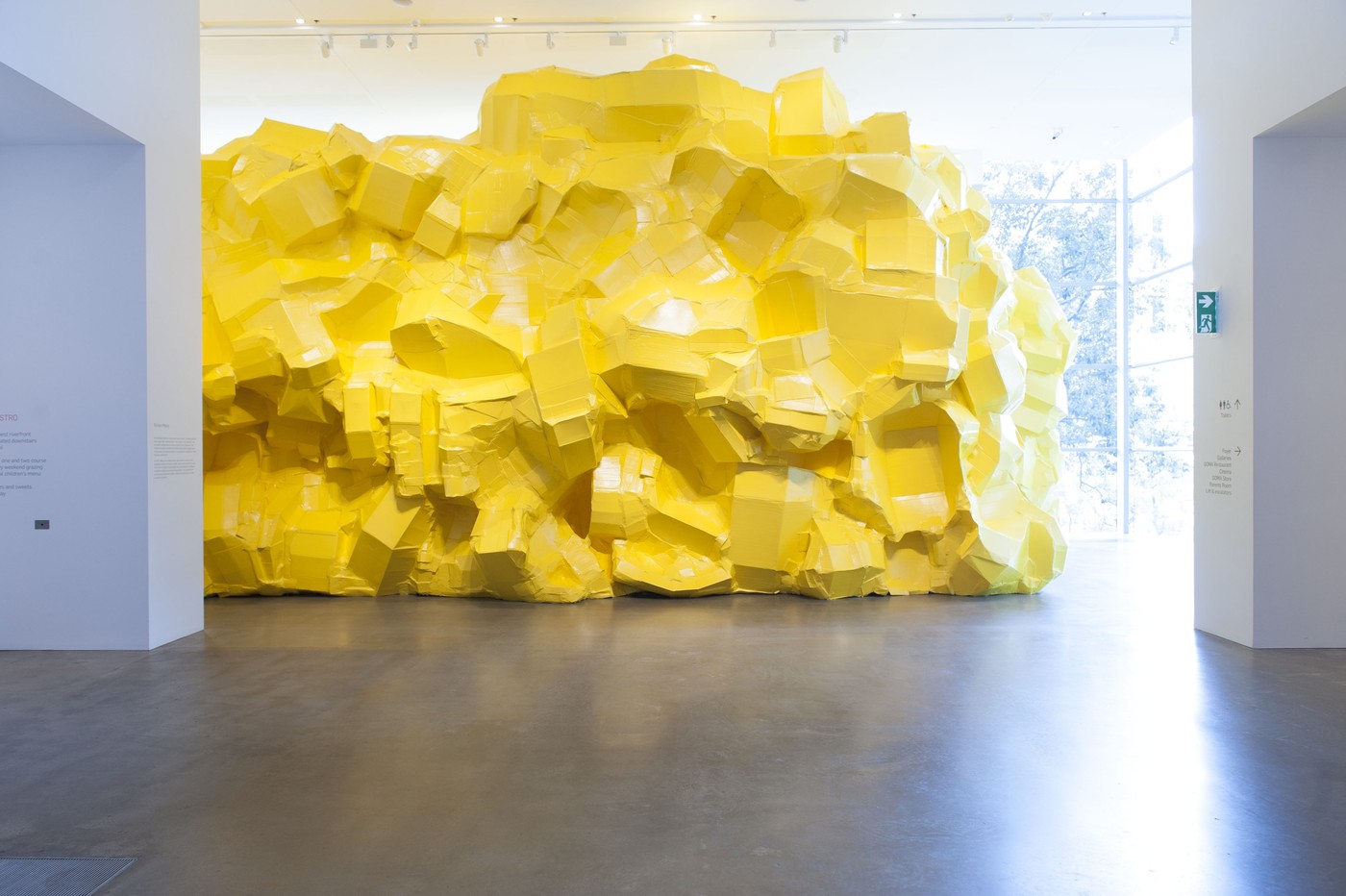
Big Yellow, 2013, Richard Maloy
More about this artworkRichard Maloy (b. 1977) based in Auckland. He is concerned with the act of art making and the connections between artists, artwork and the audience. For Precarious Balance, Maloy created his installation during the first week of the exhibition. The work was able to develop through a process of construction, dismantling and reconstruction. Due to the ever-changing process, visitors were often only seeing the installation as a moment in time. Having this element of process, production and performance, the artist was able to spend time with the viewer in a way that was playful and engaging. Maloy’s installations consider make-believe and the theatrical. Being drawn into the industrial cardboard worlds, the audience is able to immerse themselves in a new environment, interacting with and experiencing new perspectives.

Untitled, 2011, John Ward Knox
More about this artworkThe Chartwell Collection purchased this untitled work, from the Moving on Looking exhibition at Auckland’s Ivan Anthony Gallery, in 2011. The work is seemingly quiet and unassuming. Yet the tension between the two banal objects that the work is made of, is captivating. The minimalist sculpture hovers at a seemingly impossible moment, and in doing so creates a beautiful tension; a dance-like balance between two everyday objects. Somehow Ward Knox has struck equilibrium, yet there is no evidence to give his trick away – there do not appear to be any nails or glue holding the two objects in place. The feet of the chair lift off the ground, with the chair tilting back playfully on the angled cane. The careful configuration of the two objects creates interesting mirroring, angles and repeated forms. The work is both still and uncanny in that it questions the absence of the human body from the equation – where is the weary body to make use of the furniture? Perhaps the answer lies in the quaint feel of yesteryear that hangs about the objects – a bent-wood chair and a curved cane for gnarled hands and spines. This piece maintains the sensitive, understated and minimal approach that has come to characterise Ward Knox’s practice.
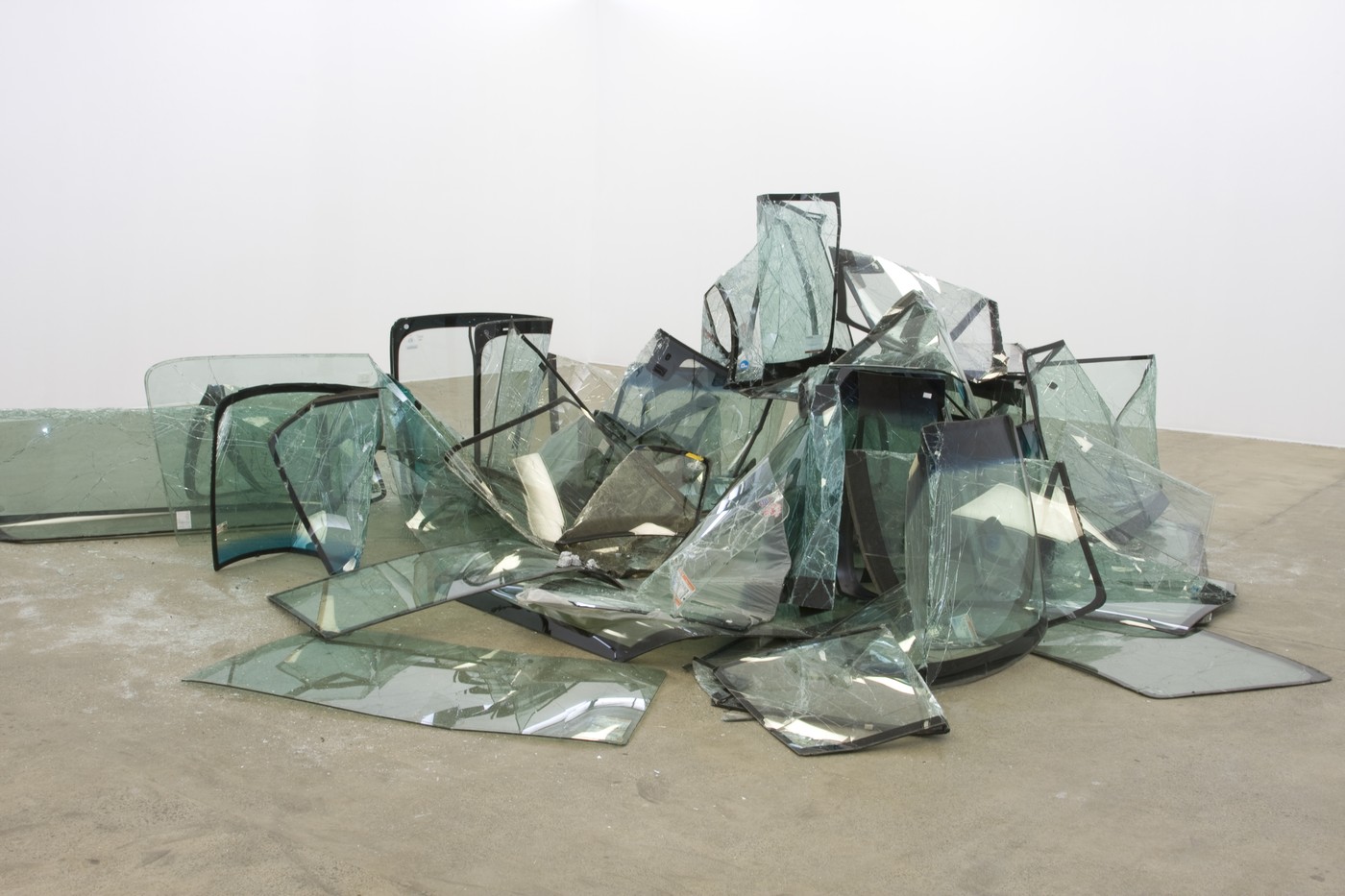
Big Bull Market, 2016, Rob Hood
More about this artworkThe title of Rob Hood’s work makes explicit his concerns with the consequences of rampant consumerism and the effect it has on our youth and culture. A pile of shattered, bent and broken car windshields creates a thought-provoking and somewhat visceral installation. However, instead of reading as a fear mongering pile of accident evidence, the work becomes a glossy, self-reflecting landscape that raises questions about consumerism, capitalism and masculinity. The multifaceted forms are beautiful and thought-provoking whilst commenting on the disastrous effect the manufacturing world has on the environment. When the lifespan of a car is finally deconstructed, a journey of hope turns into dilemma where no thought is given to disposal. The crystalline forms are masculine and angular yet show a fragmented vulnerability. Car windows stacked in dual recognition of their industrial waste and violent beauty become a balance between fragility and an appetite for destruction and risk taking. This work reads like an homage to modernism in the age of rampant consumerism.
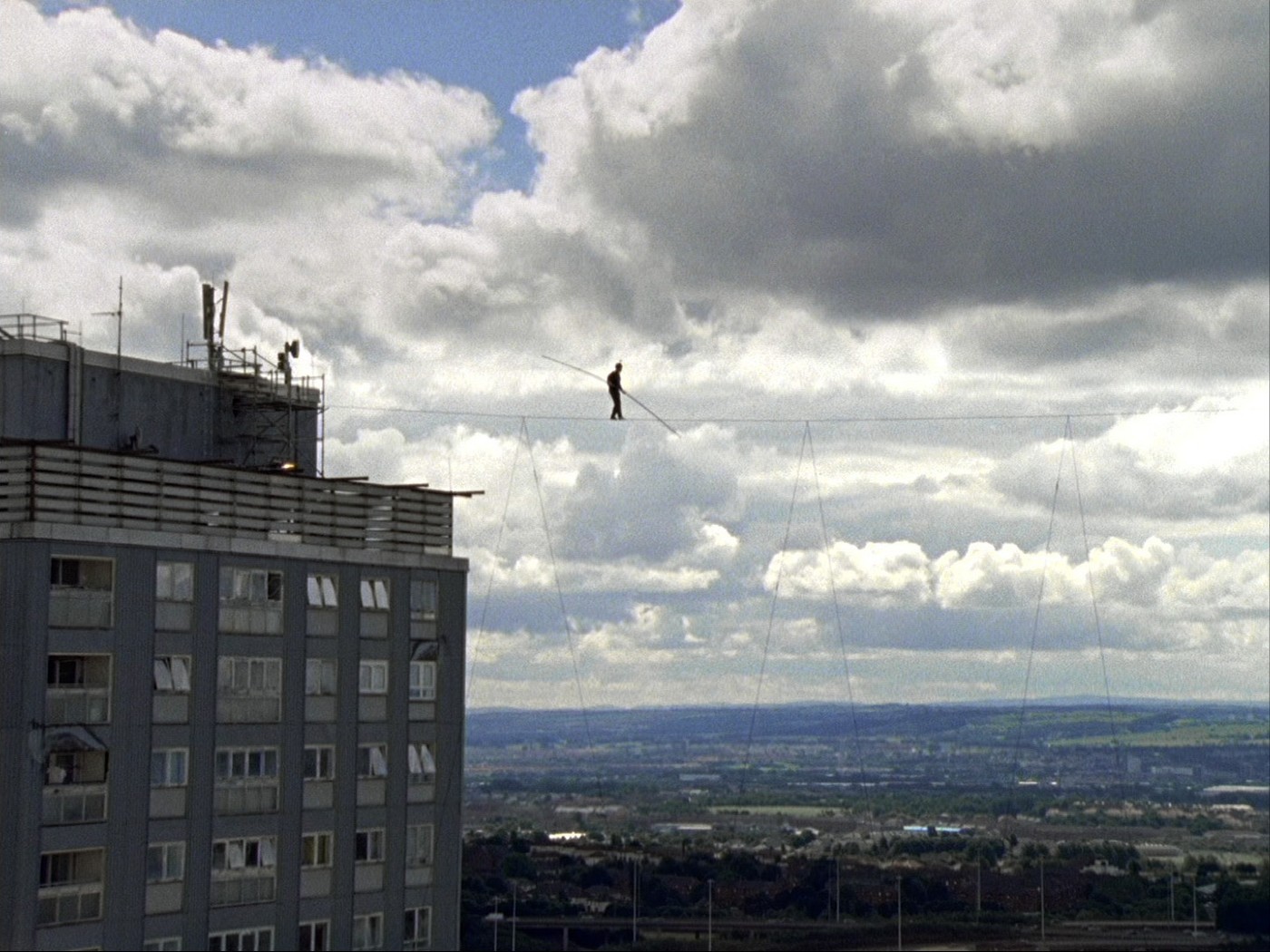
High Wire, 2008, Catherine Yass
More about this artworkHigh Wire is a multi-screen film and video installation. Yass recorded the film in North Glasgow at the location of the Red Road housing scheme in 2007 – a scheme that marked a triumph for city planners who, in the 1960s, fulfilled a vision of rebuilding a city that was characterised by the largest and tallest social housing development in Europe. For Yass, the Red Road development was significant. It reflected a new “pioneering spirit about housing policy and socialism and modernism, and about building a better world.” In her film, Yass depicts tight-rope walker Didier Pasquette crossing a 90 metre high wire, placed between three of the housing development’s tower blocks. Her imagery shows a contrast between the freedom of walking on air, and the containment of life inside a concrete block. The tower blocks that reach high into the sky represent an attempt to improve living standards for the city’s poorest by creating more room, yet Pasquette refuses to be bound by the physical constraints of those spaces. Through that imagery, Yass highlights the social and political problems associated with constraining communities, and emphasises the ability of people’s thinking and fantasies to triumph over the physical.
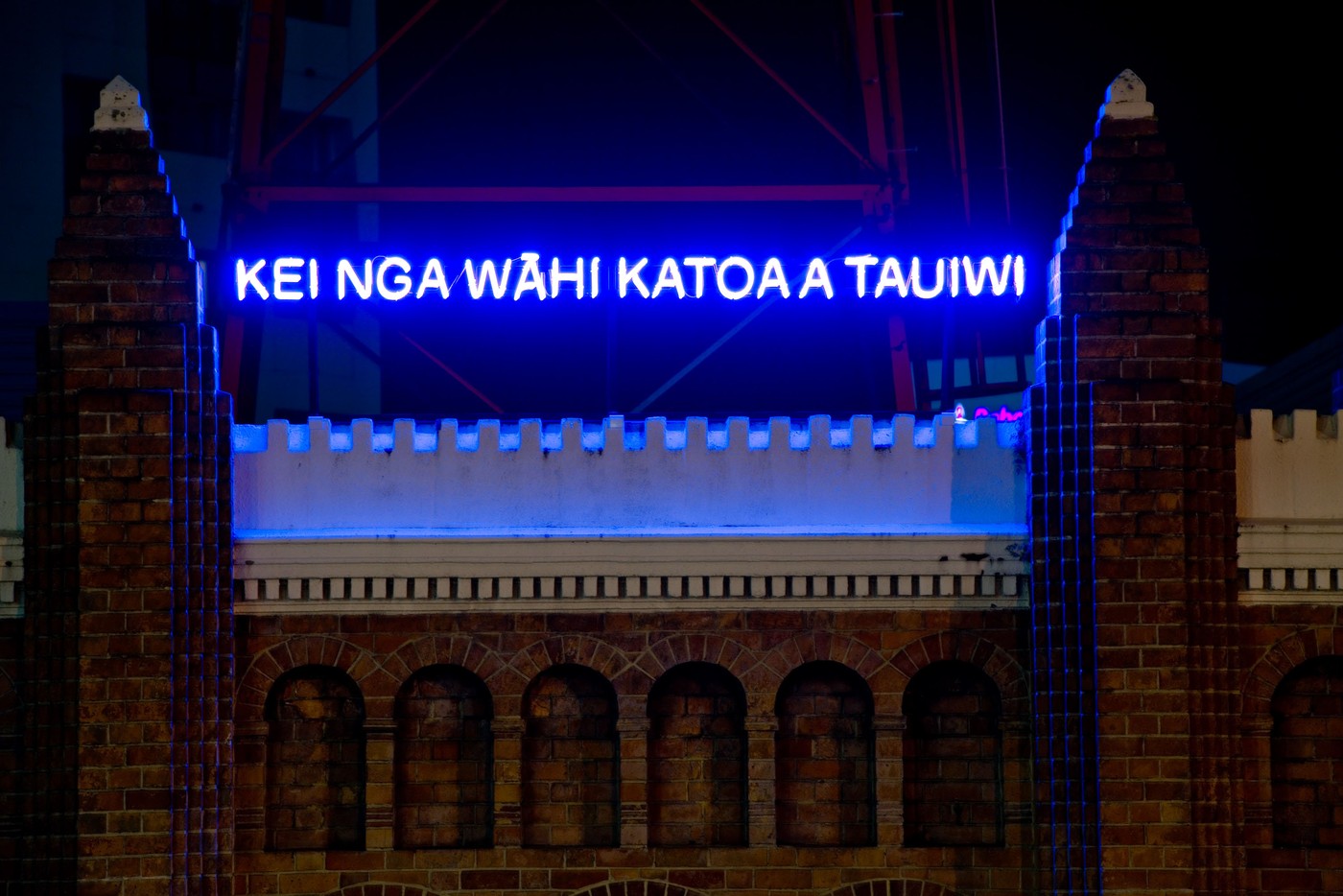
Foreigners Everywhere (Southern Māori), 2015, Claire Fontaine
More about this artworkSince 2005, Claire Fontaine’s neon signs have been displayed around the world in numerous languages, except for English. For Precarious Balance, Fontaine has been commissioned to create a new work in her ongoing series, Foreigners Everywhere. The phrase “we are all foreigners” has been translated into Te Reo meaning White Sails Everywhere, and installed as a turquoise neon light in the window of CoCA’s café, casting its light beyond the gallery space into the public streetscape. This strategic location means the work interacts with the exhibition site, and the urban environment beyond it. The work’s title is derived from Stranieri Ovunque, the Turin anarchist collective that fights racism. Implicit in its use as a public sign, the title has two meanings: it is an appeal to xenophobia and a reminder of the estrangement that comes with being foreign everywhere in a global society. The work reflects the idea that the understanding of meanings can be confused, or changed, as a result of relocation. Fontaine’s work redefines the experience of being foreign and estranged, by communicating the suggestion that those experiences are universal ones. The work reminds viewers that we all can be, or have been, foreign to something or someone, somewhere at some point in time. The Te Reo Maori translation highlights how foreign that language is to many New Zealanders, despite its heritage as the mother tongue of our country’s indigenous people, and shows the possibility for one to even experience the universal sense of being foreign and estranged in their own country.
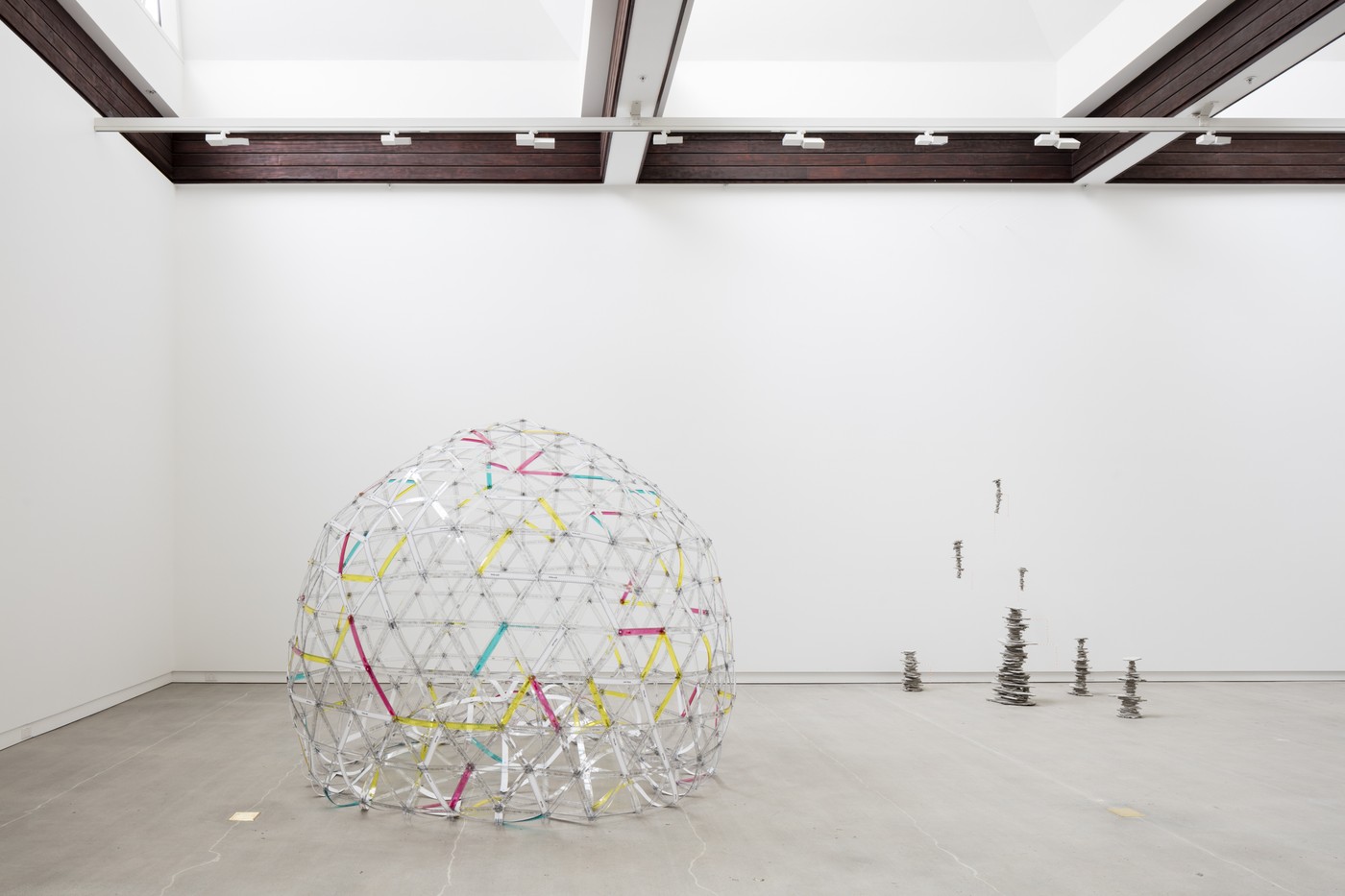
Circularism, 2016, Peter Trevelyan
More about this artworkPeter Trevelyan’s work investigates architecture, drawing, space and geometry, through the careful and delicate manipulation of materials. Forged from his interest in the history of mathematics, Trevelyan builds delicate and refined three-dimensional sculptures that are often made of repeated patterns. Trevelyan’s works merge elements of sculpture and drawing in a gallery space. His sculptural works are often created using straight lines and flat planes. The result is elegantly geometrical. By his careful craftsmanship and the slow and meticulous assemblage of his works, Trevelyan conveys ideas of fragility, both metaphorically and physically. His work turns drawings of individual lines into three-dimensional structures that are symmetrical, beautiful and mesmerizing.
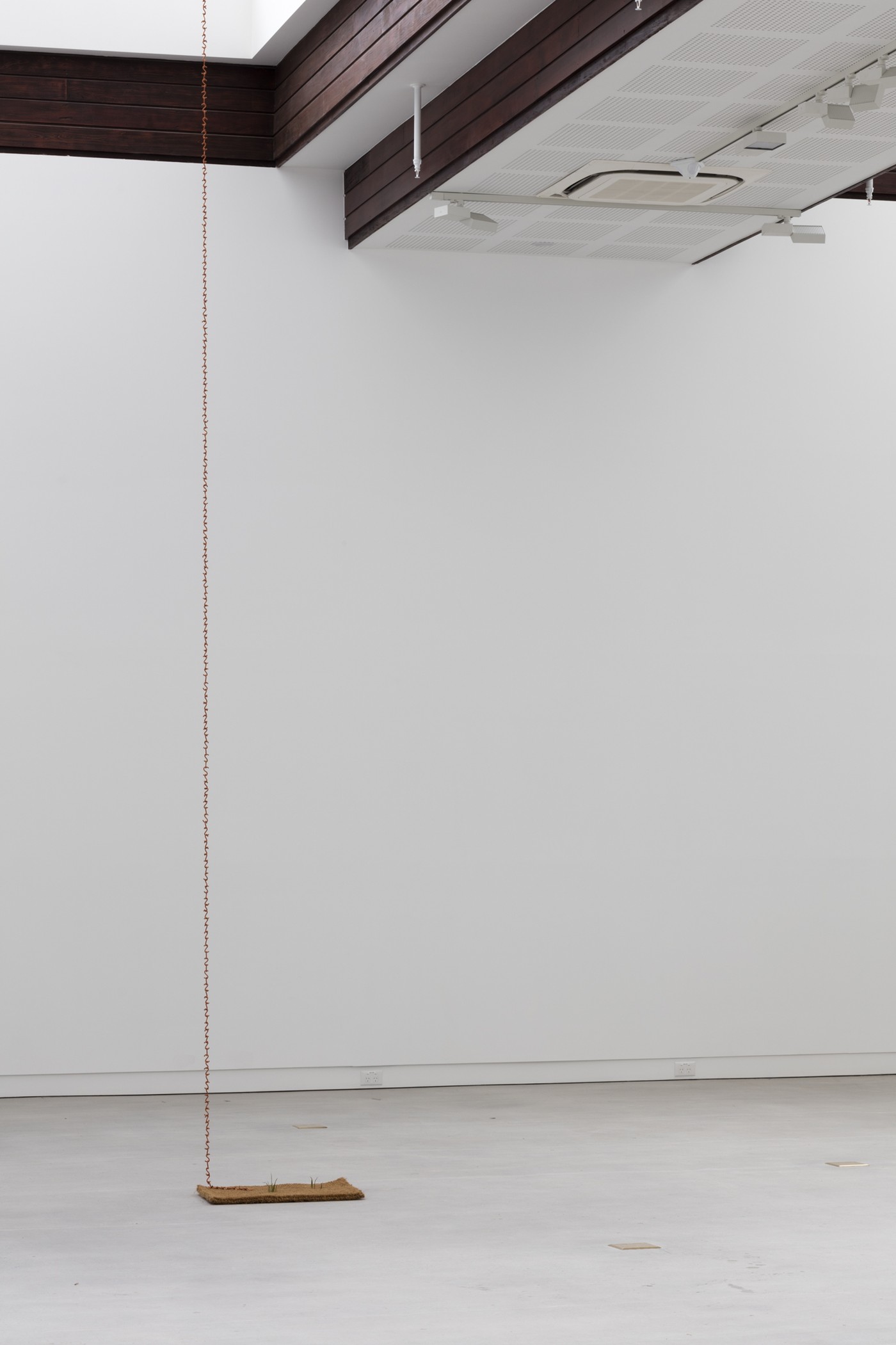
Something In Waiting, 2016
Something In Waiting, 2016, Zina Swanson
More about this artworkSwanson has been commissioned to create a new work especially for Precarious Balance in the North Gallery. She often uses drawing and sculpture as a method of teasing out abstract ideas; this work explores rituals and superstitions surrounding luck, power and the relationship between people and plants. There is a measured yet organic approach to her works - an unsettling balance between the natural and man-made. Swanson has contrasted the architecture of the gallery with the bodily scale and fragility of her sculptures and drawings. The grandiose pyramid-shaped skylights host delicate handmade ceramic ‘s’ hooks that trail down to meet a dried four leaf clover in a gesture of hopefulness in the face of futility.
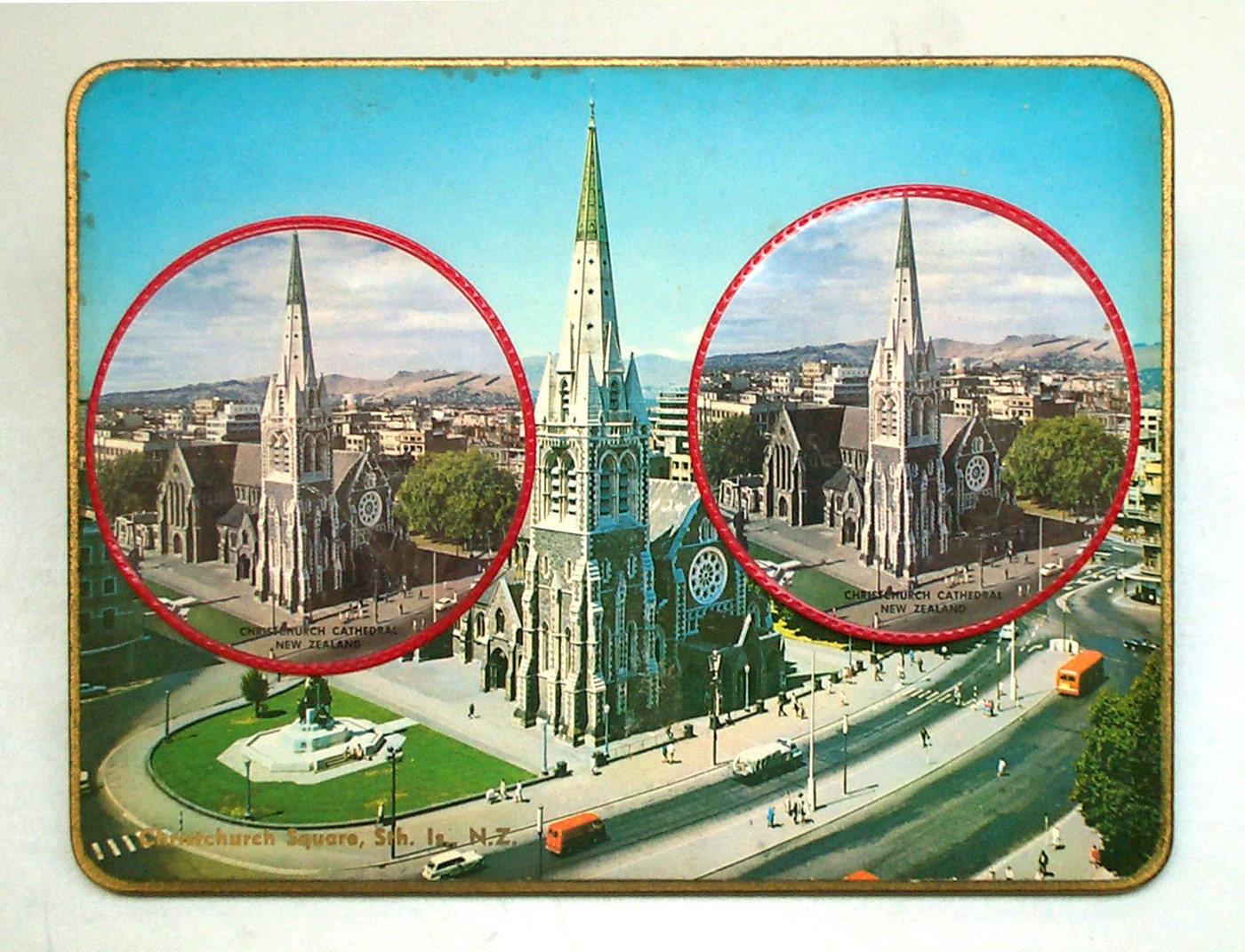
Christchurch-church-church, 2004, Regan Gentry
More about this artworkGentry uses a wide variety of materials to create his artworks. He often uses second-hand, cheap, disused and everyday objects. That cost effective use of materials gives Gentry the ability to produce artworks on a larger scale.
It also gives Regan Gentry the ability to experiment with and test materials, pushing elements to transform the objects into something that is new, exciting and grandiose.
As an artist, he is often concerned with people’s relationship to their environment. Local history, situational relevance and the interplay of people and place inform Gentry’s conceptual and creative decisions. Gentry grew up near Napier, which fostered his interest in geological history and environments.
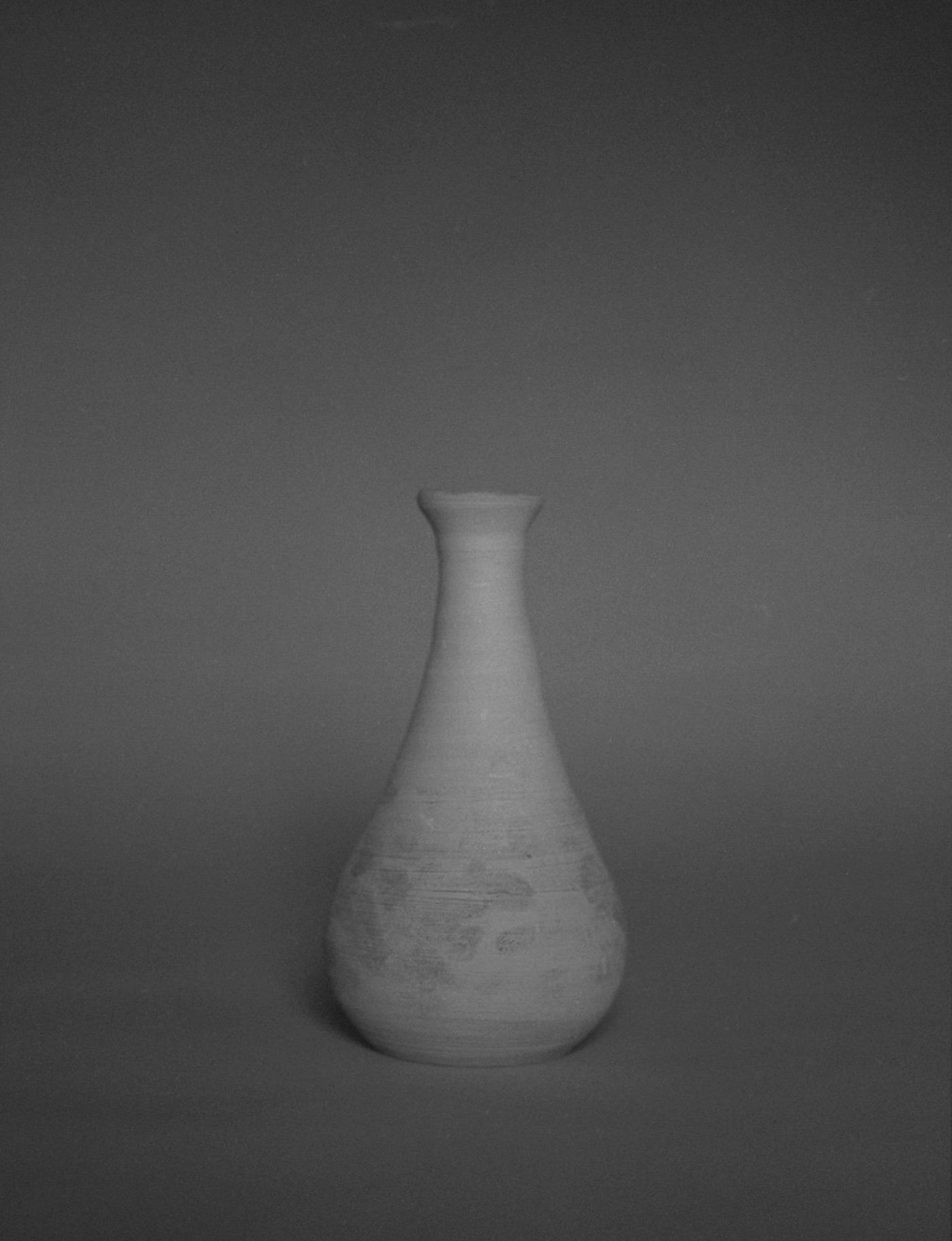
Backwater, 2015, Sophie Bannan
More about this artworkBackwater is a work that explores Bannan’s personal connection to the Christchurch Town Hall. Opened in 1972 and designed by architects Sir Miles Warren and Maurice Mahoney, there has been significant tension and frustration surrounding the potential demolition or renovation of this landmark building since it was damaged in the Canterbury earthquakes. Bannan beautifully captures her feelings about the building on film and in a series of ceramics. Created out of rubble left behind from the demolition of earthquake damaged Brutalist buildings, Bannan has made a series of earthenware pots. Debris traditionally left and forgotten has been fired into the ceramics. Made with delicate and gestural pinches – Bannan’s fingerprints are visible in the ceramics’ clay – the debris is elevated to the status of an art object.
The importance of Modernist history is explored and experienced in Bannan’s film piece. She pans the camera across and around the remnants of the Town Hall as a vital social building. Through saving, reusing and manipulating original and heavy material, Bannan creates a real tension in her work: a tense frustration about the future of the Town Hall, and a sense of frustration about the whole experience of the rebuild of Christchurch.
